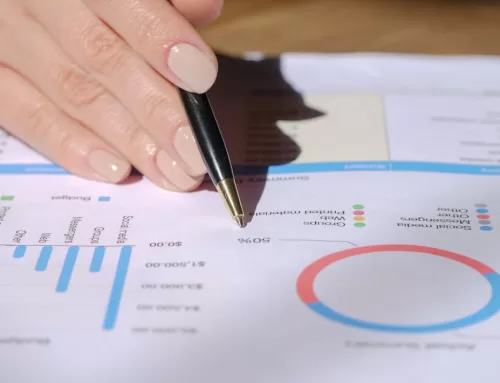And now, three more IMPORTANT techniques to use in dealing with collections and slow-pay customers. Today we’ll talk about setting the right tempo, retainers, and being Mr. Nice Guy. In the final blog in this series we’ll discuss how to be “no more Mr. Nice Guy” when it’s time to go legal. Then a word about this topic and QuickBooks Desktop and QuickBooks Online.
Setting the Right Tempo
You, not the customer, are really in control of the tempo here, but what does this mean? Let’s cite a couple of examples and you’ll understand:
1. Your monthly invoices – are they sent the day after the month closes, or much later?
For example, will the 1- 30 November invoice be sent on December 1 or in January? Customers will deduce from this whether timely payment is important to your business. An invoice which sails in weeks late suggests to the customer that they have a similar amount of time to send their payment sailing back in your direction, regardless of “Due on Receipt” terms. An invoice sent immediately after it’s due says “we are on this and diligent about getting paid!”
2. Collections Follow-up
I once worked with a company that was not only slow in invoicing, but really slow in following up. Most customers did pay on time and that was apparently good enough. But some invoices – sent to solid customers – were almost two years delinquent. The reason was simply that no one was following-up. The responsibility for “Delinquent Account Collections” was assigned to an accounting person, but the management never asked for updates so eventually all collections follow-up stopped. And as I looked further into this it was clear that the few efforts made were careless and uncoordinated, and any customer who was serious about NOT-paying had an easy time here. We eventually contacted all late-pays and almost everything was collected, but here are some rather shocking reasons why they could not pay sooner:
- Invoices emailed to the wrong person – “That person quit a long time ago; you should have sent invoices to someone else.”
- Poor follow-up – “We can’t pay your invoice until Pete gets back from traveling next week and approves.” – no one records this and Pete is not contacted for another year!
- Incorrect Protocols – One big customer said, “it says in our contract that all invoices must be submitted through our online system and will be paid within 30 days.” But no one read the contract and invoices were emailed to, well, someone (we’re not sure who) who apparently then simply deleted them.
Setting the right tempo also applies to friendly reminder calls along the lines of “just making sure you received our invoice – is everything ok?” And regular follow-up afterwards. Most firms should have regular procedures (more calls, increasingly serious letters, stop all services, go legal) for invoices as they slide into the 30, 60, and 90+ days delinquent columns.
And be true to your word: if you tell a customer “I will call on Tuesday to see if the check was cut” – then call on Tuesday and not a day later.
Customers are looking to your company to set the payment tempo, and fast is good.
Retainers from Customers
Many professionals (such as us) get retainers before any serious work can be done with new clients. Even if it’s just a token amount (say, $250) it tells you that the new customer is done shopping and is serious about working with you. Otherwise, buyers’ remorse has a long time to kick-in and the client may simply decide to switch vendors, will not pay and politely thank you for the free work. And there’s often not much that you can do about it (except maybe the legal system – see next blog).
In some industries retainers are almost universal (attorneys or construction companies for example). But if this is not the case in your industry don’t be afraid to ask. A retainer (or “a few hours paid in advance” as I sometimes call it) is understood by most reasonable new clients but is often resisted by those who aspire to get as much as they can for free and then not pay. Retainers also insulate against capricious and unpredictable customers. And retainers often allow work to begin without a serious credit check
Be sure to invoice as the retainer is depleted. Don’t tempt customers by waiting a long time and then invoicing for much larger amounts.
There are many good articles out there on just this subject (the pros and cons of retainers/upfront payment and the associated accounting treatment) – so that’s enough here except to say that this helps filter new clients who are serious about doing business – and can pay.
At First, Be Mr. Nice Guy (Or Ms. Nice Guy)
Continuing, collections are often not a favorite thing-to-do and may sometimes arise negative emotions. Such as anger. You have done so much great work and now the client is dancing around with even more nonsensical reasons about why they can’t pay now. Even worse, some clients turn it around and say they won’t pay because your work was not acceptable. Now that is a reason to get upset. But be diligent about keeping up the pressure – the squeaky wheel gets the oil – but the chances of a continued business relationship certainly diminish if anger enters in to the conversation.
The items described in this group of blog articles will help minimize late payments but the truth is that late-pays are a common part of doing business. A recent study found that more than 30% of customers pay at least two weeks late (LATE: not 2 weeks after invoicing but 2 weeks LATE). So that’s a lot of customers working to increase your blood pressure and shorten your life. Keep on it though in a professional and business-like manner. Also keep in mind that some are not that bad and could be reformed to your way of doing business. Maybe they just screwed up, some may just be enduring a temporary cash shortfall, and some may really appreciate your good work and just need to understand that your business is serious about on-time payment.
That’s why it’s important to maintain a cordial relationship with even late-paying clients. Don’t send angry messages. All communications should be clear, correct (in a legal and accounting way) and non-emotional. This can be especially important if things go legal (next article) where angry letters and emails often look foolish).
QuickBooks Collections Features
Finally, QuickBooks Desktop (QB Pro, QB Premier, QB Enterprise and QB POS) and QuickBooks Online are the best small business accounting programs in the universe, but they do not have features that extend much into the areas of collections and related follow-up. Consider a separate system for this, such as a CRM.
Good communications are they key to everything here. As time goes on, lots of emails then phone calls, letters and even visits will let the customer know that you are on top of this. And you will have a good understanding of what is really going on at their end: are they serious or just waiting until you go away?
If you need help with collections give us a call and we can help!







